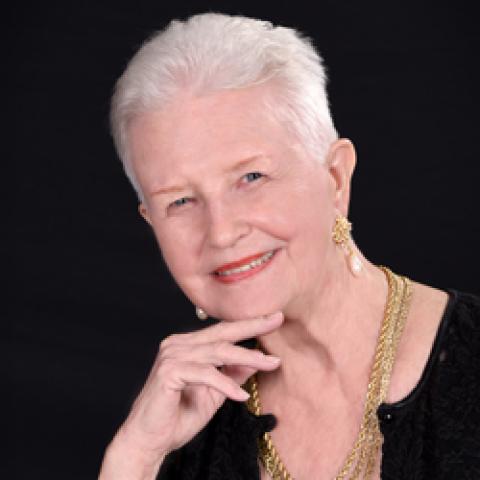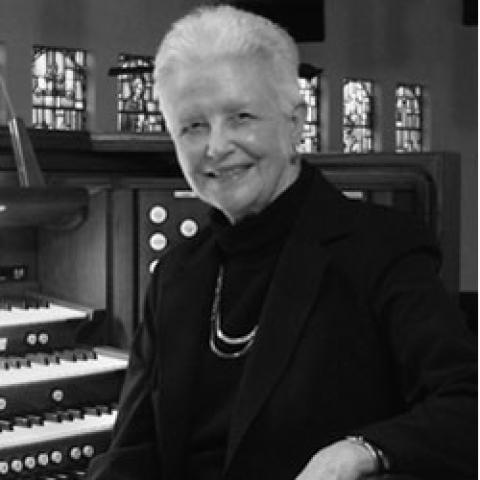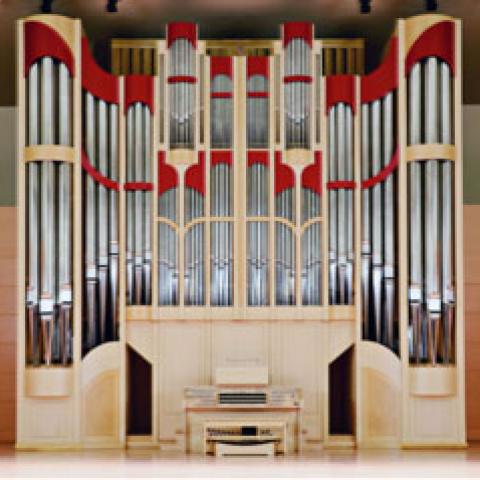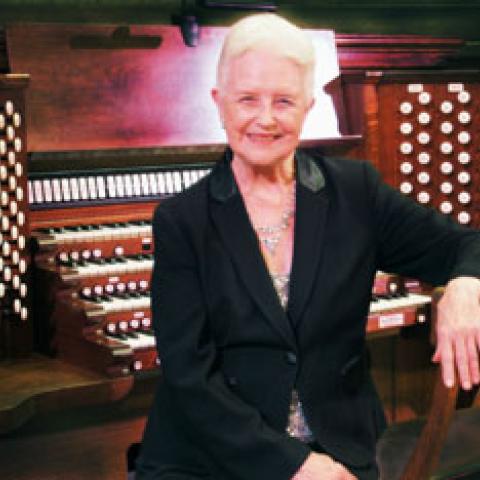The University of Nevada Las Vegas Department of Music &
Southern Nevada Chapter American Guild of Organists
PRESENT
DOROTHY YOUNG RIESS, M.D., ORGANIST
75th Birthday Celebration Recital!
Sunday Evening, April 2, 2006, at 7:00 P.M.
Doc Rando Hall, Beam Music Center
Maryland Parkway, Las Vegas NV
“Dr. Dorothy” started piano lessons with her mother at age four, and after switching to the organ at 16, became a protégé of Mildred Andrews at the University of Oklahoma. She won the American Guild of Organists National Competition in 1952 at age 20 and went on the study in France with Marcel Dupré at l’École de Musique de Fontainebleau. She was guest organist at the American Church in Paris, organist at the Church of the Holy Spirit, Nice, and later at the American Church in Rome, Italy. She received a full scholarship to Yale University Graduate Music School and performed her Masters Recital in Woolsey Hall in 1959. A series of life changes led her into the healing arts and she completed pre-med studies at Columbia University, New York City. She received her Doctor of Medicine degree from the University of Oklahoma in 1969, and after four more years of post-grad training, practiced Internal Medicine in Pasadena, California, until her retirement in 2000. Since relocating to Las Vegas, she has returned to organ playing and is pleased to celebrate her 75th year on the planet by playing this recital. Dr. Riess is married to Dr. Louis Riess, B/G USAF Ret., has two step-sons and two grandchildren. She is a member of the Southern Nevada Chapter of the American Guild of Organists.
* PROGRAM *
Pierre Du Mage, “Grand Jeu” (16th cent)
J.S. Bach, “Prelude and Fugue in E Flat (St Anne)” BWV 552 (1739)
Robert Schumann, “Four Sketches for Pedal Piano, Op. 58, #3” (1845)
Robert Schumann, “Six Fugues on B-A-C-H for Pedal Piano,
Op. 60, #5” (1845)
Felix Mendelssohn, “Prelude and Fugue in b minor for Piano,
Op. 35, #3” (1837) transcribed by Bossert/Riess
Cesar Franck, “Chorale in a Minor” (1890)
Herbert Howells, “Rhapsody #3” (1918)
Jan Janca, “Ite Missa Est, Triptych for Organ, Cantabile” (1988)
Milos Sokola, “Passacaglia quasi Toccata on B-A-C-H” (1963)
Rudolf von Beckerath Pipe Organ III/53/2004






